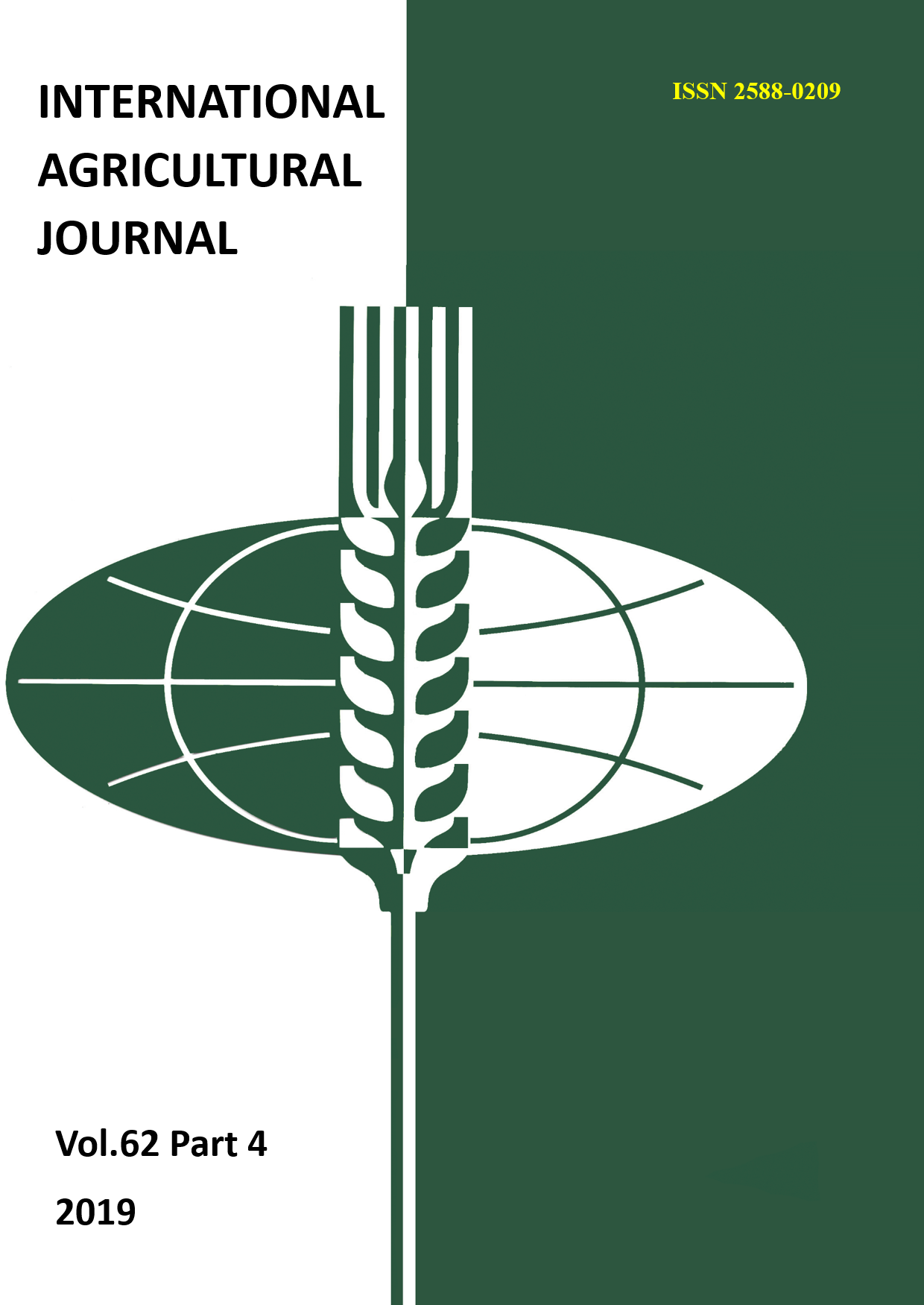MILLET CULTIVATION IN FORAGE CROP ROTATION UNDER THE CENTRAL YAKUTIA CONDITIONS
Main Article Content
Abstract
In this article, the results on yield, nutritional value and productivity studies of sowing millet variety “Baganskoye 88” are provided. This study took place in Prilenskoye agrolandscape, located in the second floodplain terrace in the Lena river. Central Yakutia’s climate is considerably harsh. However, by total of heat storages, abundancy of low overcast days, the rapid increase of temperature during spring and in overall high solar radiation activity during the vegetation period, it is safe to argue that this territory is suitable for the successful cultivation of forage crops with relatively short growing period.
One of the promising crops for silage production is millet cultivation. Prospect of cultivating a new millet culture for silage under the permafrost conditions have been launched. According to productivity studies, the yield of dry weight in millet over the years of research was 3,26 t/ha in the control variant, - 4,86t/ha in the (NPK)60 variant and 6,10t/ha in the estimated fertilizer dose (NPK)160 variant. The yield of exchange energy was 27,42 – 50,94 GJ/ha, feeding units 1,82 – 3,42t/ha, collection of digestible protein – 0,35-0,75t/ha. Nutrition of millet was noted in 1 kg of dry matter 0,56 feed units, digestible protein 107,17-126,23 g, metabolic energy 8,3-8,4 MJ, gross energy 17,5 -17,6 MJ. The supply of 1 feed unit with digestible protein was 189–227g. The usage of mineral fertilizers improved the quality of the feed crop by 15-20%. The silage from millet contained 1 kg of dry matter - feeding units 0.55; digestible protein 39.9 g; exchange energy -8.21 MJ; gross energy 17.3 MJ and digestible protein in 1 feed unit 72.5 g.
Article Details
References
2. Maksimova H.I., Nikolaeva V.S., Sivceva A.N. Novaya urozhajnost' kormovyh kul'tur v usloviyah Central'noj YAkutii. - M .: Kormovoe proizvodstvo, № 9, 2014. - S. 34-38.
3. Kerefov K.N. Biologicheskie osnovy rastenievodstva. M., 1975 - 420
4. Agrarnaya sistema v Respublike Saha (YAkutiya) na period 2016-2020 gg. // Instrumentarij. - YAkutskij nauchno-issledovatel'skij institut sel'skohozyajstvennyh nauk. - YAkutsk, 2016. - S-186.
5. Ivanova L.S. Adaptivno-landshaftnye sistemy zemledeliya Leno-Amgskogo mezhdurech'ya [Tekst] / L.S. Ivanova. - RAAS Sib. YAkutskij filial. NIISH. - Novosibirsk: 2004.- S-114-115
6. Rukovodstvo po polevym eksperimentam s kormovymi kul'turami. Rossijskaya sel'skohozyajstvennaya akademiya. - M., 1997.-- 154 s.
7. Rukovodstvo po agroenergeticheskoj i ekonomicheskoj ocenke tekhnologij i sistem kormoproizvodstva. - M., 1995 .-- 173 s.
8. YUdin F. A. Metodologiya agrohimicheskogo issledovaniya. - 2-e izd., Pererabotannoe. i dobavit'. - M .: Kolos, 1980 .-- 366 s.
9. Sel'skohozyajstvennaya sistema v Respublike Saha (YAkutiya) na period 2016-2020 gg. // Metodicheskoe posobie. - YAkutskij nauchno-issledovatel'skij institut sel'skohozyajstvennyh nauk. - YAkutsk, 2016 .-- 415 s.
10. Bronya B.A. Metody polevyh eksperimentov / B.A. Bronya, 5-e izd., Pererabotannoe. i dobavit'. - M .: Agropromizdat, 1985 .-- 351 s.

